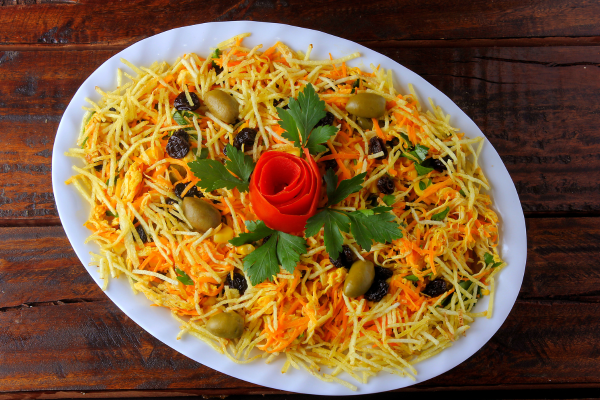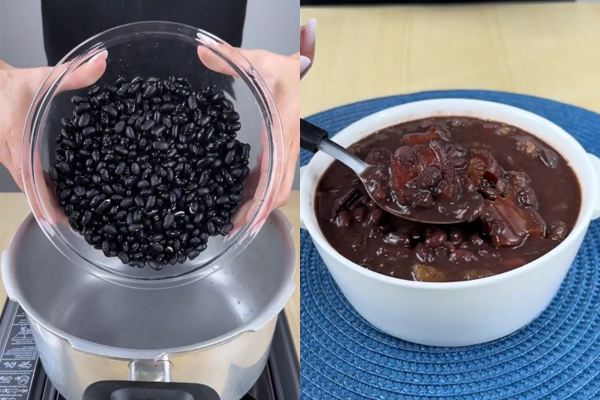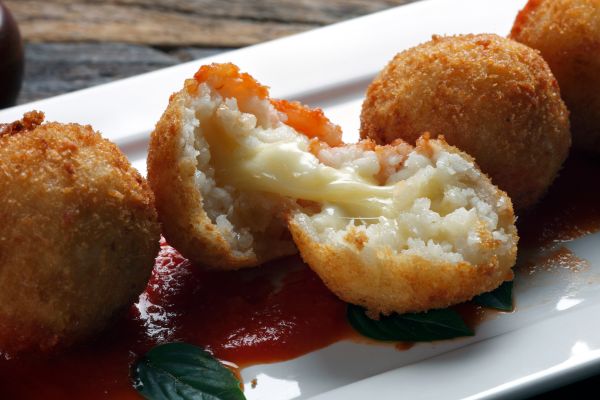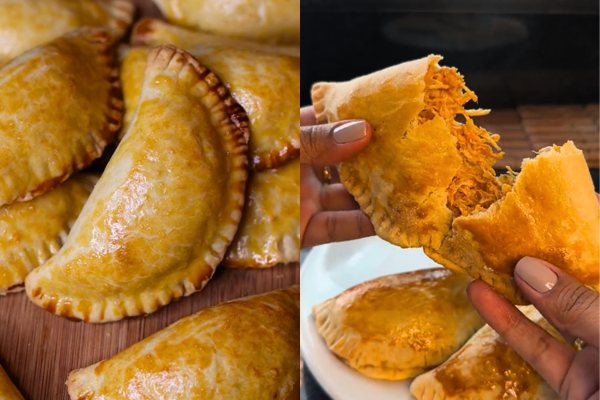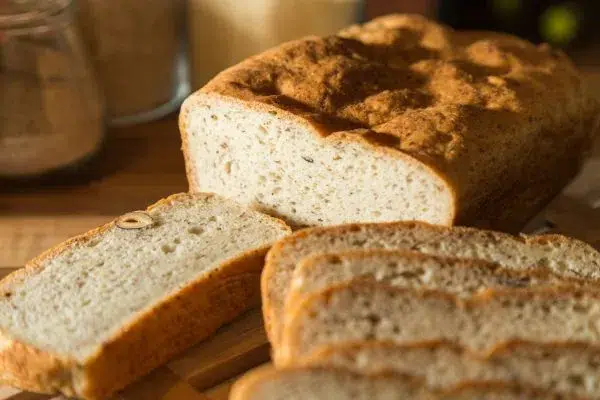Discover the Secret to Perfect Pastry Dough
Advertisements
O pastel é um dos salgados mais populares do Brasil. Pode ser encontrado em feiras, bares, restaurantes e até mesmo em supermercados. A massa de pastel é um dos principais ingredientes deste delicioso salgado.
Ela pode ser feita de diversas formas, mas a receita tradicional é feita com farinha de trigo, água e sal. Um dos segredos por trás desse quitute tão amado está na massa de pastel, um elemento fundamental que influencia diretamente na experiência gastronômica.
Advertisements
Neste artigo, exploraremos a importância da massa de pastel, suas características, como prepará-la em casa e algumas dicas para aperfeiçoar o resultado final.
O que é Massa de Pastel?
THE massa de pastel é um tipo de massa fina e crocante, geralmente feita à base de farinha de trigo, água e gordura.
Essa combinação resulta em uma textura única, perfeita para envolver os mais diversos recheios, desde os clássicos como queijo e carne até opções mais inovadoras e gourmet.
THE massa de pastel é um elemento versátil na culinária brasileira, sendo apreciada em feiras, lanchonetes e até mesmo em eventos sociais.
Características da Massa de Pastel
Uma das características marcantes da massa de pastel é a sua capacidade de fritar de maneira uniforme, criando uma crosta dourada e crocante que contrasta com o recheio suculento.
Sua preparação exige uma atenção especial à consistência e elasticidade, garantindo que a massa seja fácil de manusear e resulte em pastéis perfeitamente fritos.
Como Preparar a Massa de Pastel em Casa
Necessary Ingredients
Prepare massa de pastel em casa é uma atividade gratificante que permite personalizar os sabores de acordo com suas preferências. Os ingredientes básicos incluem:
- 2 cups of wheat flour
- 1/2 teaspoon salt
- 2 colheres de sopa de gordura (pode ser banha, margarina ou óleo)
- 1/2 xícara de água morna
Passo a Passo
- Em uma tigela, misture a farinha de trigo e o sal.
- Adicione a gordura escolhida, incorporando-a à farinha até obter uma textura de migalhas.
- Acrescente a água morna aos poucos, mexendo continuamente, até formar uma massa homogênea.
- Sovar a massa por alguns minutos em uma superfície enfarinhada.
- Deixe a massa descansar por aproximadamente 30 minutos, coberta por um pano úmido.
- Divida a massa em pequenas porções e abra cada uma com um rolo até atingir a espessura desejada.
- Está pronta para receber o recheio e ser frita até a perfeição.
Dicas para Aperfeiçoar sua Massa de Pastel
- Escolha dos Ingredientes: Opte por ingredientes de qualidade, pois a excelência da massa de pastel começa na escolha dos insumos.
- Descanso da Massa: Permita que a massa descanse adequadamente para garantir a elasticidade necessária. Isso contribuirá para uma textura mais delicada e crocante.
- Espessura da Massa: A espessura da massa de pastel pode ser ajustada de acordo com sua preferência. Experimente diferentes espessuras para encontrar a combinação perfeita com o seu recheio favorito.
- Fritura Adequada: Certifique-se de que o óleo esteja bem quente antes de adicionar os pastéis. Uma fritura rápida e em temperatura adequada resultará em uma crosta dourada e crocante.
Dicas para Recheios de Pastel
Os recheios de pastel são uma verdadeira festa para o paladar, e sua variedade permite combinações infinitas para agradar todos os gostos. A chave para um bom recheio é equilibrar sabor, textura e consistência, garantindo que a mistura se encaixe perfeitamente na massa crocante. A seguir, algumas sugestões e dicas para incrementar os recheios de pastel e explorar novas possibilidades:
- Minced meat: Um dos recheios mais tradicionais e saborosos, a carne moída pode ser temperada com alho, cebola, pimentão, tomates e ervas frescas, como orégano e manjericão, para dar um toque extra de sabor. Para uma variação, acrescente azeitonas picadas ou queijo ralado para um recheio mais cremoso.
- Queijo: O queijo, por si só, é um recheio delicioso, e suas possibilidades são praticamente infinitas. Desde o clássico queijo muçarela até combinações com queijo de cabra, provolone ou gorgonzola. Experimente adicionar um pouco de orégano ou tomilho para um toque aromático, ou até um toque de pimenta calabresa para quem gosta de um sabor mais intenso.
- Calabresa: Para quem adora sabores mais picantes, a calabresa é uma escolha certeira. Sauté a calabresa com cebola e pimentão, e, se quiser um toque especial, adicione azeitonas ou um pouco de molho de tomate. Uma combinação deliciosa é a calabresa com queijo, criando um recheio suculento e irresistível.
- Ovo: O recheio de ovo é simples e delicioso, especialmente quando combinado com outros ingredientes. Uma variação saborosa é o ovo cozido picado com maionese e temperos, formando uma mistura cremosa e leve. O ovo também vai bem com carne moída ou presunto, criando combinações recheadas de sabor e textura.
- Ovo com Presunto e Queijo: Um clássico que nunca sai de moda, esse recheio é simples, mas muito saboroso. O ovo mexido, combinado com o presunto e queijo derretido, cria uma textura cremosa que contrasta com a crocância da massa. É uma opção prática e deliciosa para quem busca um recheio reconfortante.
- Palmito: O palmito é uma opção leve e saborosa, especialmente para quem prefere recheios vegetarianos. Refogado com cebola, alho, tomate e temperos frescos, o palmito se torna um recheio cremoso e cheio de sabor. Para uma versão mais sofisticada, você pode adicionar ervas finas, como salsinha e cebolinha, e até um toque de creme de leite.
- Atum: O atum em conserva é uma excelente escolha para quem quer algo rápido e delicioso. Misturado com maionese, cebola, azeitonas e um toque de limão, o atum cria um recheio leve e refrescante. Para quem gosta de sabores mais ousados, adicione um pouco de pimentão vermelho ou até mesmo molho de mostarda e mel para um toque agridoce.
- Frango: O frango desfiado é incrivelmente versátil e pode ser preparado de diversas formas. Refogado com alho, cebola, cenoura ralada, e temperos, o frango ganha sabor e suculência. Uma variação deliciosa é o frango com catupiry, formando um recheio cremoso que se derrete na boca. Para um toque extra, adicione milho, ervilhas ou até bacon crocante.
- Vegetais: Uma excelente opção para quem busca algo mais leve e saudável, os vegetais podem ser a estrela do recheio. Abobrinha, berinjela, cenoura e cogumelos refogados formam uma combinação saborosa, enquanto o espinafre e o brócolis podem adicionar um toque verde e nutritivo. Para um toque ainda mais especial, experimente adicionar um pouco de queijo cottage ou ricota, que trazem uma cremosidade irresistível.
FAQ – Perguntas Frequentes sobre Massa de Pastel
Posso congelar a massa de pastel?
Sim, a massa de pastel pode ser congelada. Basta dividir em porções, envolver em filme plástico e armazenar no freezer por até 3 meses.
Posso substituir a gordura por outra opção?
Sim, é possível substituir a gordura por margarina, óleo ou banha, dependendo das suas preferências pessoais.
A massa de pastel pode ser assada em vez de frita?
Embora a tradição envolva a fritura, é possível assar a massa de pastel para uma opção mais saudável. No entanto, a textura final será diferente.
Posso utilizar outros tipos de farinha na receita?
A farinha de trigo é a mais comum, mas experimentar com outras farinhas pode resultar em texturas e sabores distintos. Entretanto, ajustes na receita podem ser necessários.
Conclusion
A massa de pastel, quando bem preparada, tem o poder de transformar uma refeição simples em uma verdadeira celebração de sabores e texturas.
Seu toque crocante por fora e macio por dentro cria uma experiência única, capaz de realçar qualquer recheio, desde os mais tradicionais até os mais ousados e inovadores.
Ao dominar a arte de fazer a massa em casa, você não só aprimora suas habilidades culinárias, mas também resgata a autenticidade e o sabor caseiro que muitas vezes se perde nas versões industrializadas.
Além disso, a versatilidade da massa permite que você explore uma infinidade de combinações, adaptando-a aos mais diversos paladares e ocasiões.
Seja como aperitivo, lanche ou prato principal, o pastel nunca perde sua magia, proporcionando momentos de prazer e satisfação.
Ao final, ao criar pastéis recheados com amor, dedicação e criatividade, você não só cria uma refeição, mas um convite à descoberta de novos sabores e ao prazer de compartilhar bons momentos ao redor da mesa.


